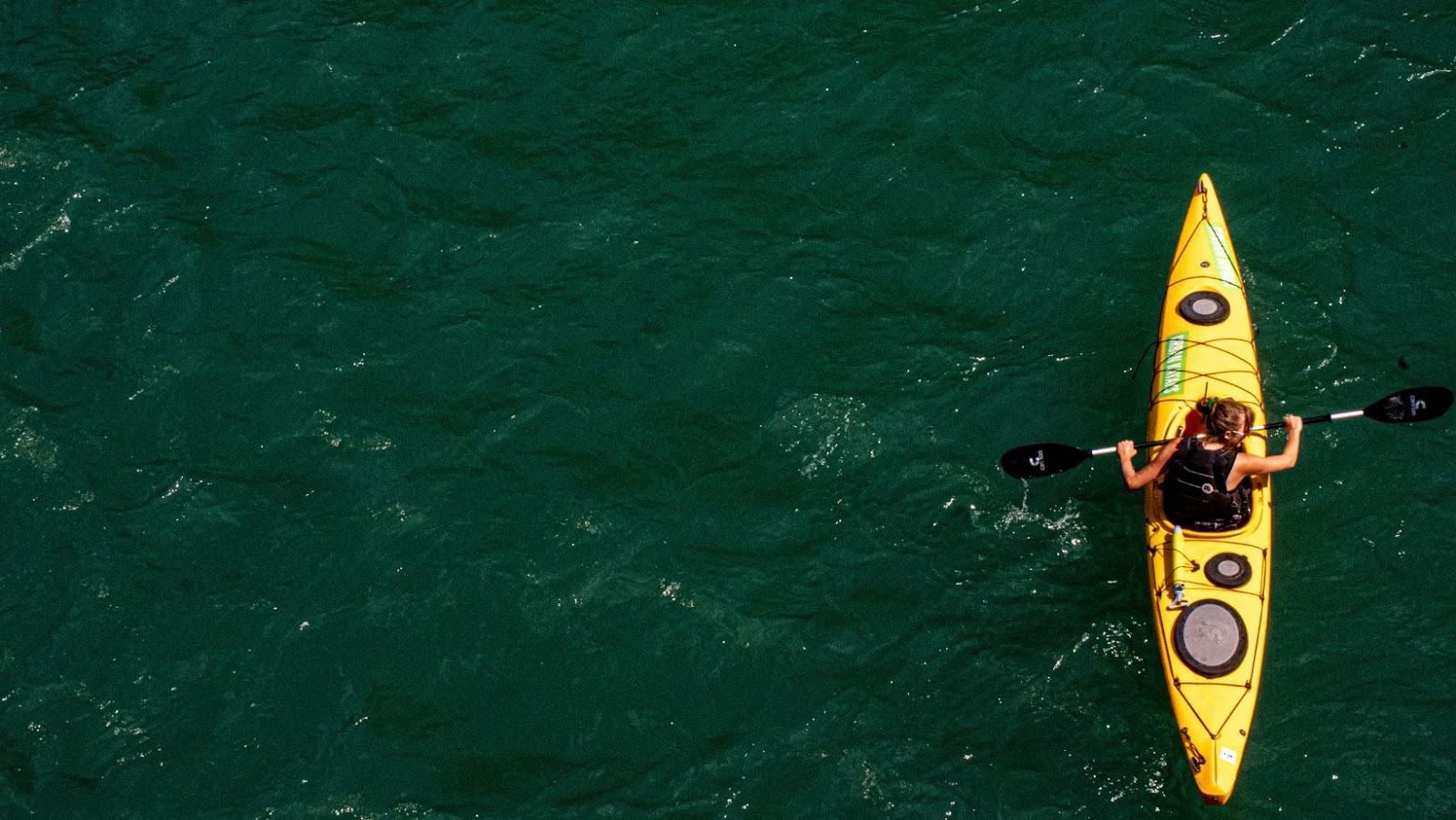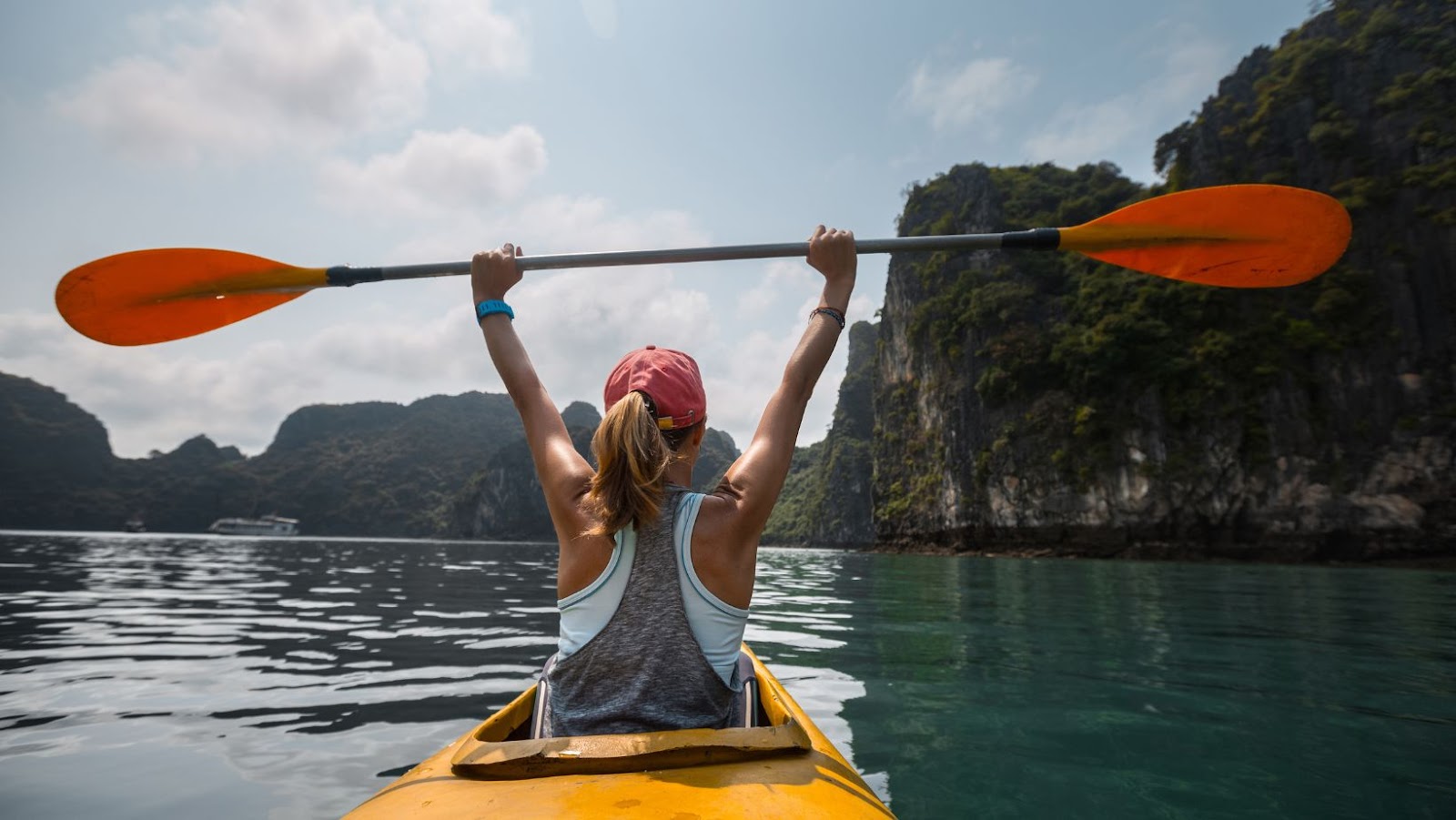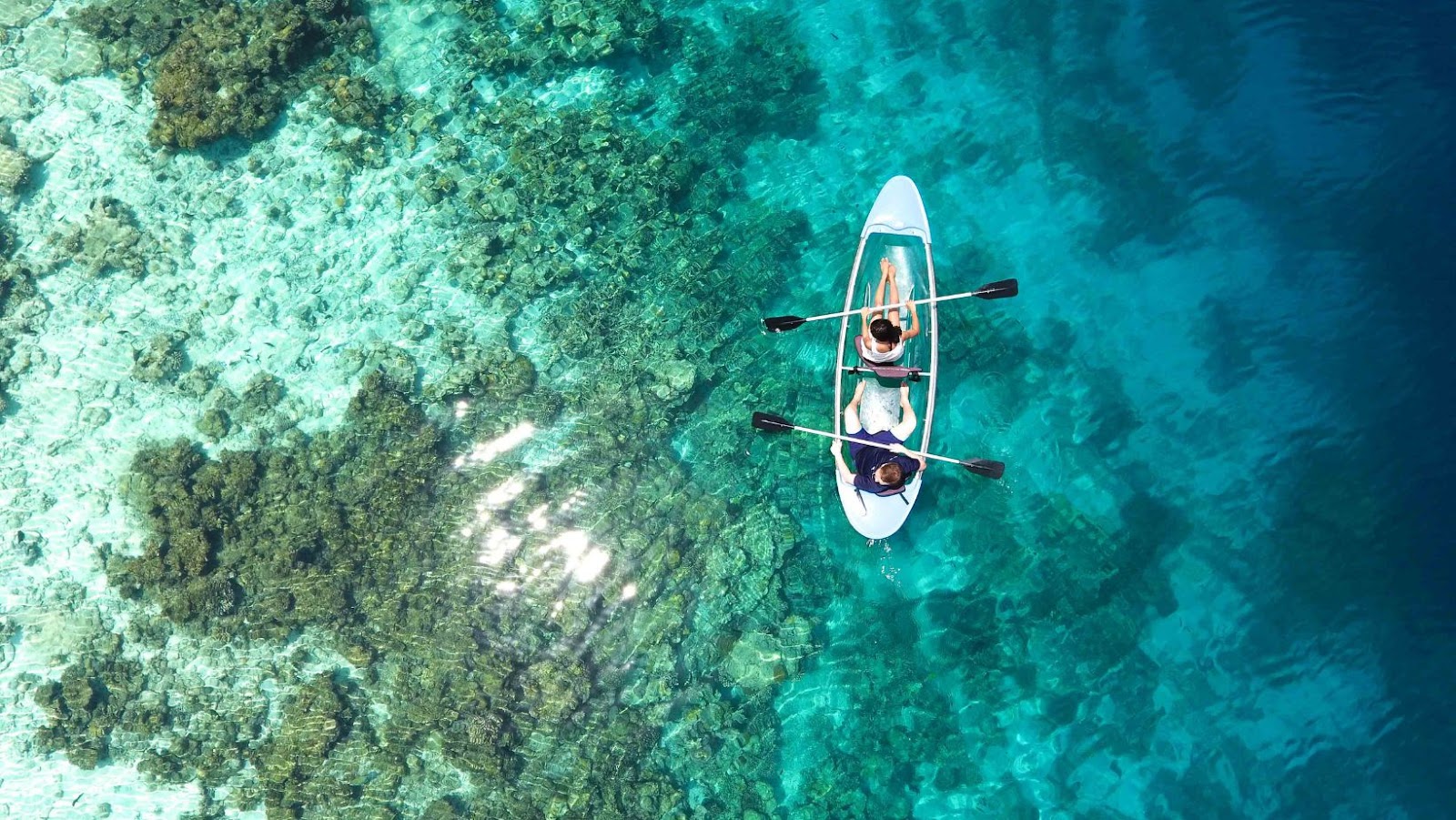
Don’t you just love getting out on the lake and feeling the wind in your hair as you paddle across the waves?
Whether you’re a beginner or an experienced kayaker, you’ll find just the right spot with our ultimate guide to where to go kayaking! Here, we give you all the information you need for an amazing day out.
Kayaking is an incredibly popular water sport that can be enjoyed by people of all ages and experience levels. Whether you’re a beginner just starting out or an expert wanting to push the limits of your skills, kayaking is a great way to explore and experience the beauty of the outdoors from a unique perspective. With its relatively small size, maneuverability and portability, kayaking can open up exciting new adventures that you might never have otherwise experienced.
Before getting started, it’s important to familiarize yourself with the different types of kayaks and their best uses as well as make sure you have all the necessary safety gear to ensure your time on the water is as safe and enjoyable as possible. It’s also important to know where to go when it comes to planning your route – some places offer more challenging paddling experiences while others may be better suited for a relaxing day trip. Make sure you do adequate research so you know you’re headed in the right direction!
Types of Kayaks
Kayaks are versatile watercrafts used by many people for fishing, touring, and recreational paddling. There are some fundamental types of kayaks that can help you understand which kayak is right for your needs.
Inflatable Kayaks: Inflatable kayaks offer convenience and portability. These kayaks are made from PVC material similar to a boat air mattress, but usually much stronger and thicker. Inflatables can easily fit in the trunk of a car, a closet or the corner of a room making them great options for travelers who want to bring along their own boat. They work well on lakes and mild rivers and are easy to transport once they’re deflated so you can take them anywhere.
Sit-in Kayaks: Sit-in kayaks have an enclosed cockpit along with a deck covering the legs upon entry. These provide good protection against wave splashes if you plan to paddle in choppy waters like oceans or big bodies of water. The cockpit also provides stability allowing easier mobility when getting in and out of tight spots while controlling your vessel.
Stand-up Paddle Boards (SUP): Stand-up paddleboards are basically large surfboards with attached paddles that allow users to stand up on board while propelling themselves forward on calm waters like flat lakes or ponds as well as shallow coastal areas like bays or protected lagoon environments. No special skills are needed; just basic balance can help you maneuver these boards quickly across the water’s surface providing hours of fun on flat days when the wind won’t cooperate .
Choosing the Right Kayak
When looking into kayaks, there are many things to consider before making a purchase. Before selecting a boat, it is important to answer questions like, “Where will I be paddling?”, “What size kayak do I need?” and “What type of kayak should I choose?”
The decision should be based on factors such as intended use (like recreational touring, exploring fast-moving rivers or sea kayaking), body size and strength of the paddler and the type of water or environment you will be in. In order for your kayak experience to be a safe and enjoyable one, it is important to select the best boat for your individual needs.

In general there are four main types of Kayaks: Sit-in Kayaks, Sit-on-Top Kayaks or recreational boats, Touring Kayaks or sea kayaks and Whitewater Kayaks for fast moving rivers. Each has its own set of benefits and features that meet specific needs of their users. It is important to research the different types of boats available and make an informed decision when choosing which one best fits your own individual interests. Paddling with a boat that is not properly outfitted can turn a great day on the water into an uncomfortable experience — so taking the necessary time prior to purchasing can guarantee a successful outing down river or out at sea!
Kayaking Safety Tips
Before you head out on the water, it is important to be aware of the safety measures and understand the risks involved when kayaking. Here are a few tips to keep in mind:
• Wear a Personal Floatation Device (PFD) at all times when kayaking. Know your limits, and never paddle alone.
• Check the weather forecast before going out to make sure conditions are suitable for paddling.
• Be aware of nearby wildlife that could pose a danger such as sharks or large waves. If any dangerous wildlife is present, leave the area immediately.
• Familiarize yourself with local laws and regulations – some areas might be restricted with special access requirements.
• Have a plan for how to stay safe if you capsize or become separated from your kayak. This includes carrying an emergency kit with flare signals and other items that could help rescuers find you easily if needed.
• Know your paddling limits and never take risks that could put yourself or others in danger. When paddling on open water, always stay within sight range of shoreline landmarks, be mindful of currents and tides, and never paddle beyond your ability level.
• Dress appropriately for conditions – wear layers that can help retain body heat in cold temperatures, such as a drysuit or wetsuit if necessary; otherwise wear items that are comfortable yet protect from sunburns or scrapes against rocks/shells.
• Tell someone where you are going who can contact help if necessary in case of an emergency situation arising unexpectedly while out on the water.
Where to go Kayaking
Kayaking is a great way to explore the outdoors and connect with nature. Whether you are looking for serene lakes to take a gentle paddle or raging rivers for an adrenaline-filled ride, there are many amazing kayaking destinations around the world to choose from. Consider the following spots for your next kayaking adventure.
North America: The United States is home to some of the finest whitewater rivers in the world, including famous spots such as the Nantahala River, Chattooga River and Ocoee River in North Carolina. Other prime destinations include Utah’s San Juan River, Idaho’s Salmon River and California’s Tuolumne and Merced Rivers.
Europe: Some of Europe’s best kayaking spots can be found along its famously gorgeous coastlines with pristine coves and rugged sea cliffs – ideal for those seeking out remote, hard-to-reach places away from tourist crowds. Top picks include Croatia’s stunning Adriatic coastline or Scotland’s Hebrides Islands chain with so many stunning paddling routes to explore.
Asia: Kayakers will find some of the best whitewater runs are located within Asia’s majestic mountain ranges. Locations range from classic alpine runs like China’s spectacular Salween River or Nepal’s Trisuli River perfect for tackling rapids at a gentler pace; or try adventurous river journeys in Bhutan such as a week long play through of Po Chhu river set among breathtaking landscapes at every turn!
South America: South America boats some truly wild adventure running experiences through ruggedly beautiful terrain including Ecuador’s Rio Upano, Peru’s Amazon tributary Apurimac & Brazil’s Paranaiba among others! Lush forests line endlessly winding waterways creating an enchanting playground that is sure to captivate any kind of paddler!
Paddling Techniques
When kayaking, the paddle is your main source for propulsion, navigation and balance. Whether you are a beginner or an experienced kayaker, there are a few basic techniques you should know in order to paddle effectively.
The Forward Stroke is the most basic and commonly used technique that propels you forward. This involves using a “J” shaped stroke by dipping one end of your paddle into the water and pulling it toward yourself. To ensure efficient paddling, your hands should remain close to the side of the kayak while paddling. As you pull through each stroke, keep your top hand in front of your bottom hand while letting it move slightly farther outboard than the lower hand.
A Sweep Stroke can be used to turn your kayak around quickly or make small adjustments in direction. The sweep is done with a larger sweeping motion on either side of your kayak using both hands on one end of the paddle. It’s common for people to use this type of stroke when moving around buoys or areas with shallow water.
To move sideways, use a Skeg Stroke; this involves taking shorter strokes along one side while keeping both hands close together at one end of your paddle blade. You will want to realize that this technique requires more arm strength due to its drag-oriented nature; however, it can prove useful when negotiating tight spaces such as short rocky outcrops or accessing narrow shorelines easier than possible with regular forward strokes.
Advanced techniques may also be used such as Wing Paddling which requires copious amounts of practice; going in reverse or Bow Ruddering which uses rudder-like movements with added pressure on either side of the boat’s ends during each stroke causing it to turn more efficiently across its beam (width). The Crossover Stroke is also quite common among experienced paddlers which uses similar muscles as those found in crossing-country skiing due its complex motions across towards different sides/directions mid-stroke as well as involving other portions/features within nearby surroundings (i.e., currents, trees).
Kayaking Etiquette
Kayaking is an enjoyable sport which allows you to get a unique view of the outdoors. To ensure positive experiences on and off the water, kayakers should comply with established protocols, courtesy and safety standards. Following these guidelines prepares responsible kayakers to handle unexpected situations and also helps protect the environment.

Some essential kayaking etiquette guidelines include:
- Be mindful of other people enjoying activities on the water. Kayakers should be respectful of swimmers, rowers, fishermen or windsurfers who share the river.
- Be aware of your presence in ecologically sensitive areas when stopping or camping ashore. Use only established campsites and keep them clean.
- As international waterways often do not have fence lines, it is important to know where you are paddling in regards to country borders when crossing between states/countries as local regulations can differ significantly from each other regarding rights and responsibilities for boats crossing into adjacent waters.
- Keep an eye open for changes in weather conditions such as sea fog or storms that can make navigating difficult or dangerous in certain areas and if possible defer trips altogether during inclement weather days.
- Have a communication plan in place; choose someone on shore who knows where you’re going and when you plan to return so they can alert authorities if necessary if more than three hours pass without your return time. Additionally, it’s important everyone on board has working VHF radios that are actively monitored at all times while out paddling. Remember, even heavily used waterways can become incredibly isolating once you’re without cell service range — so always leave a copy of your plans with someone reliable before departure showing intended routes and how long you anticipate being out for that adventure!




